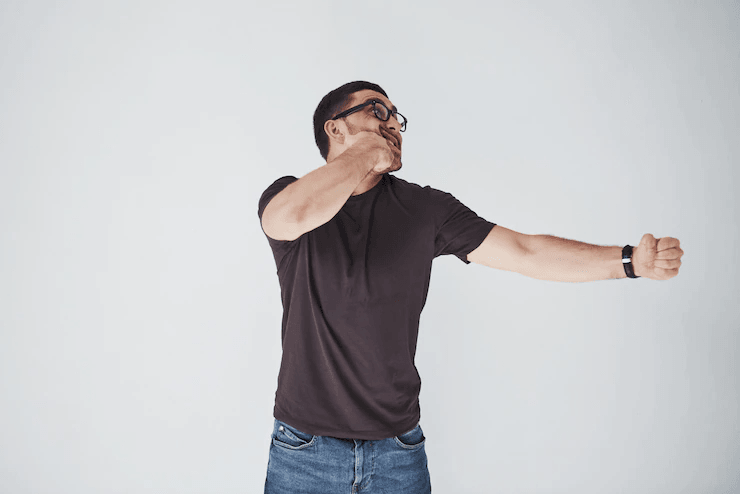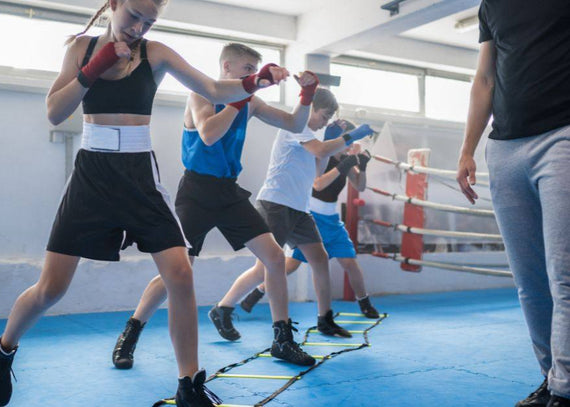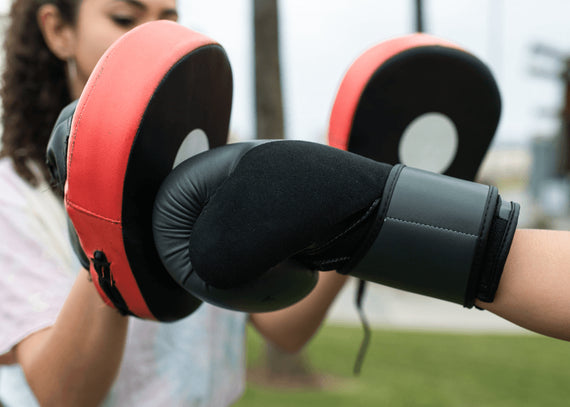Boxing is one of the sports that require a very high level of physical fitness. While playing, there is a constant risk of getting punched in the most sensitive parts of your body. And as we all know, the neck is one of the easiest and most vulnerable targets for the opponent to strike on. If you have a weak neck then there are chances of getting your neck badly injured. It's true that by using the right punching techniques, you can protect your neck to quite an extent, but it's not always possible to stop your opponent from reaching out to your weak spot!
Here your neck strength has a huge role to play! If you have a strong neck then your head will get better support and you will feel less whiplash. Having a thicker and sturdier neck will help you in taking punches and fire back with ease. By strengthening your neck, you will protect both your head and your neck over time. If your opponent punches your face, your neck can help your head in bouncing back with full force. And if by chance, you get any injuries, then a healthy, strong and muscular neck will recover faster than a weak neck. So, keeping this in mind, let's look at some of the greatest neck exercises for boxing to prevent injury and improve your effectiveness when sparring or in the ring.
#1 Start With Exercises That Strengthens Your Stability
Establishing a strong foundation for your neck can be easily achieved by performing some fundamental bracing exercises. Doing this exercise is very simple, you need to start by attaching your iron neck training equipment, setting up some resistance on it, and performing a 360-degree spin while keeping your neck packed and stable are the only steps involved while performing. To complete one rotation, move at a very slow pace, lasting approximately ten to fifteen seconds.
After that, you can move on to the next exercise, which is a look to the left and a look to the right. To begin, take a few steps away from your anchor point while simultaneously tightening up your neck. Then, give a glance over your right shoulder. After this, bring your attention back to the middle of the room and then glance over your left shoulder. It is enough to perform a few sets of five repetitions of these exercises.
#2 Start With Practicing Controlled Movement Patterns Related To Boxing
As soon as you feel comfortable with these two fundamental motions, you may advance to the regulated movement patterns that you will go through while boxing, notably while weaving and bracing, which are protraction and retraction.
To begin, position yourself so that you are facing your anchor point and move backwards until you feel some tension on the neck. Then, bring your chin forward and create a forward head position by allowing it to move forward. Protraction is the term for bringing your head back into alignment and tucking your chin in, which you should do. Once that is complete, you will be able to turn around and look towards the opposite direction. You need to perform the exact same movement again, but this time the resistance will increase as you bring your head closer to your chest in order to train retraction. Boxing relies heavily on both of these movement patterns.
You can improve your sport-specific skills by doing a movement called a "locked neck body rotation," in which you make an athletic posture while applying resistance to the harness. You need to rotate your torso while pivoting at the waist, but you don’t have to modify the alignment of your head, neck, chest, or torso. Maintain a slow and regulated tempo until you get the hang of things, and start out with not more than five. Give your body some time to relax before you attempt the next exercise.
This is a technique that you should learn from an expert before performing yourself. You can watch your trainer and observe the body postures so that you can successfully attempt it. And the same can be said for the upcoming exercises that you will be learning today.
#3 As Your Strength Increases, Incorporate Multi-Planar Neck Movements Into Your Routine
The neck motions that we have covered up to this point do an excellent job of producing a stable and solid neck while developing the strength in the muscles in the front and rear of your neck. However, what about the muscles on the sides of your neck?
These muscles can be strengthened if you perform diagonal movements. Take a few steps away from your point of anchorage and incline your head to a 45-degree angle. Trace a diagonal line, gazing down at one shoulder all the way over the other shoulder. In addition, you should execute the exercise with your back turned away from the anchor point so that you may work all of the muscles you are targeting. You can then proceed to try figure eight. If you want to strengthen your neck, this is a tougher exercise that will help in strengthening the muscles of your neck without giving too much strain or pressure on it.
In addition, we suggest giving it a shot without the use of any resistance at all before bringing in the neck harness or the iron neck. To begin, you will want to gaze down at your shoulder, just like you did with the diagonals; this is the simple principle around which this movement is based. However, at this point, you will link the diagonals you have been working with and draw a figure eight across your vision. This exercise not only targets your neck but several other parts of your body too and it will work on your mobility.
#4 Move On To Neck Exercises That Are More Complicated
Once you have reached a good level of strength in your neck, you simply need to be consistent with your exercises to maintain it. When it comes to neck training, the possibilities are virtually endless after you have learned the fundamentals. Experiment with every single one of these exercises, from the reverse nordic to the cervical glides, and even the fundamental ones like thoracic rotation, which incorporate resistance at the neck. Take breaks whenever needed and keep in mind that these exercises are not only strengthening your neck but your shoulders, upper back and chest as well.
Wrapping Up
While training for boxing, several people make the mistake of only training themselves to strengthen their core, arms, legs and so on. They often forget to train their sensitive areas like their neck which can easily become prone to injuries. After reading this blog, you must have got an idea about how important it is to have a strong neck while playing boxing. We have also discussed several exercises that you can perform from the very beginning stage to advance levels of boxing. These exercises will help you in strengthening your neck which will give you an added advantage while you are in the boxing ring! If you're looking for boxing training equipments, look no further than Mani Sports for premium quality products.





